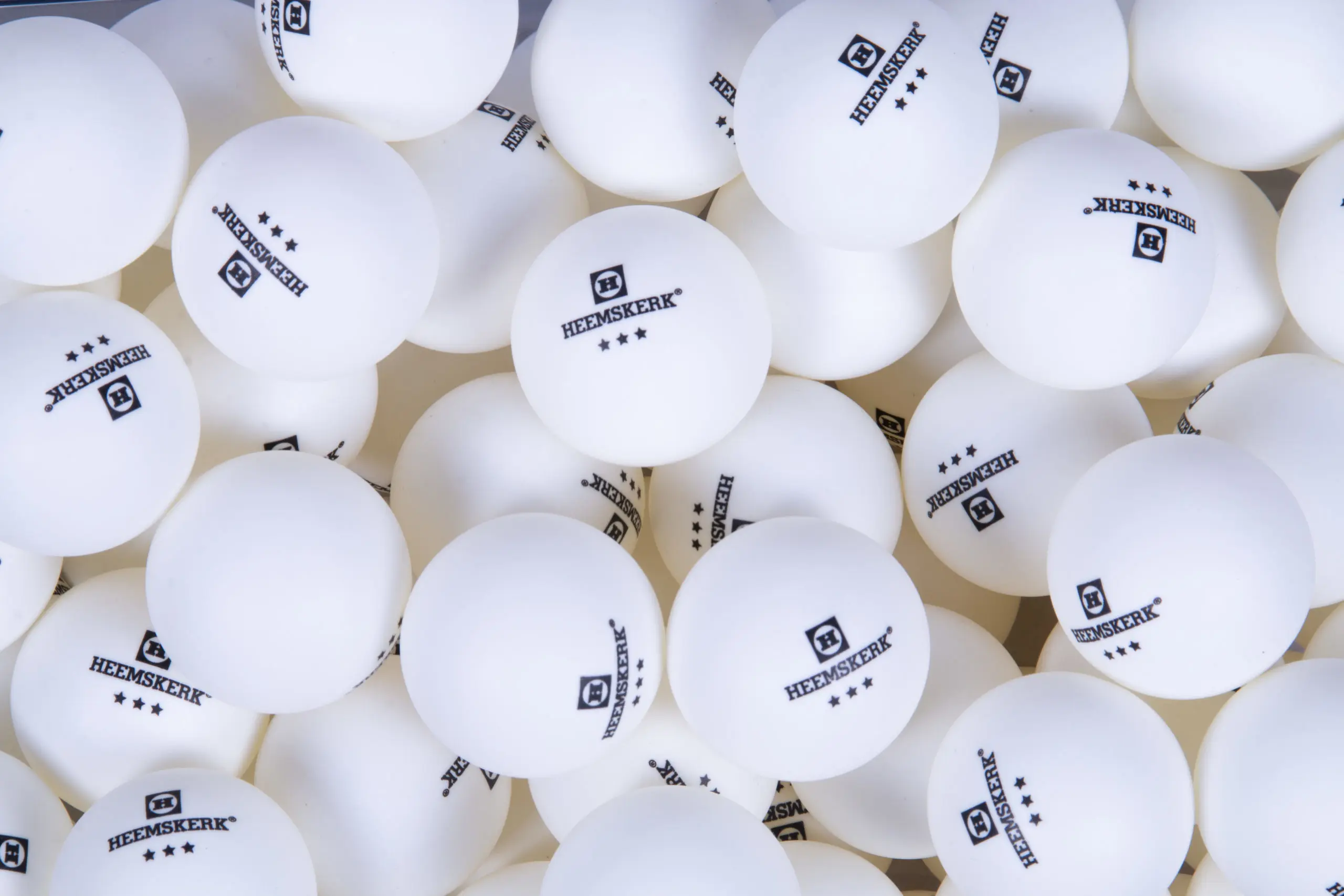Ping pong, also known as table tennis, is a sport enjoyed by millions around the world. Central to the game is the ping pong ball, a seemingly simple yet highly engineered piece of equipment that plays a crucial role in the sport. In this comprehensive guide, we will explore the history, specifications, manufacturing process, and impact of the ping pong ball on the game of table tennis. Additionally, we’ll delve into the evolution of the ball’s design, its influence on gameplay, and its cultural significance.
1. The History of Ping Pong Balls
1.1. The Origins of Table Tennis
Before diving into the specifics of ping pong balls, it’s important to understand the origins of the game itself. Table tennis traces its roots back to the late 19th century in England. The game began as a parlor game, often referred to as “indoor tennis” or “whiff-whaff,” played by the upper class as a form of entertainment.
- Early Equipment: The earliest versions of the game used makeshift equipment, such as champagne corks for balls and cigar box lids as paddles. The game was informal and often improvised, with players using whatever they had on hand.
1.2. The Introduction of the Celluloid Ball
The modern ping pong ball has its origins in the early 1900s with the introduction of celluloid, a synthetic material that was lightweight, durable, and ideal for the game’s fast-paced nature.
- James Gibb and the Celluloid Ball: James Gibb, a British table tennis enthusiast, is credited with introducing the celluloid ball to the game. In 1901, after returning from a trip to the United States, Gibb brought back celluloid balls, which he believed were perfect for table tennis due to their consistent bounce and lightweight properties.
- Standardization: The celluloid ball quickly became the standard for the game, and its adoption marked the beginning of modern table tennis. The ball’s characteristics allowed for more control, spin, and speed, fundamentally changing how the game was played.
1.3. Evolution of Ping Pong Balls
Over the decades, the design and materials of ping pong balls have undergone several changes, driven by technological advancements and the evolving needs of the sport.
- Introduction of the 38mm Ball: For most of the 20th century, the standard ping pong ball measured 38mm in diameter. This smaller ball was known for its speed and required players to have quick reflexes and precision.
- Switch to the 40mm Ball: In 2000, the International Table Tennis Federation (ITTF) made a significant change by increasing the diameter of the ball from 38mm to 40mm. The larger ball was slower, making the game more spectator-friendly and emphasizing skill over speed.
- Material Shift to Plastic: In 2014, the ITTF mandated a shift from celluloid to plastic balls due to environmental and safety concerns associated with celluloid production. The plastic balls, while similar in performance, have slightly different characteristics, including a different sound when struck and slightly altered bounce dynamics.
2. Specifications of the Modern Ping Pong Ball
2.1. Size and Weight
The modern ping pong ball has specific size and weight requirements, as defined by the ITTF.
- Diameter: The ball must have a diameter of 40mm, with slight variations allowed within a tolerance of ±0.05mm. This size provides a balance between speed, control, and visibility during play.
- Weight: The ball must weigh 2.7 grams, with a tolerance of ±0.05 grams. The weight is carefully controlled to ensure consistent performance across all balls.
2.2. Material Composition
Today’s ping pong balls are made from a special type of plastic, often referred to as acrylonitrile butadiene styrene (ABS).
- Plastic Composition: ABS plastic is chosen for its durability, lightweight nature, and ability to produce consistent bounce characteristics. It is also safer to manufacture and less flammable than celluloid.
- Impact on Performance: The plastic ball has slightly different playing characteristics compared to the older celluloid ball. For example, it tends to produce a slightly higher bounce and may have a different spin response.
2.3. Color and Markings
Ping pong balls are available in various colors, but the most common are white and orange. The choice of color depends on the playing environment.
- White Balls: White ping pong balls are typically used in settings with darker backgrounds, such as in professional tournaments or indoor venues, as they are easier for players and spectators to see.
- Orange Balls: Orange balls are preferred in settings with lighter backgrounds, where they provide better visibility.
- Markings: Ping pong balls often feature a star rating, which indicates the quality of the ball. Three-star balls are considered the highest quality and are used in professional competitions. Lower star ratings (one or two stars) are typically used for recreational play.
2.4. Bounce and Spin Characteristics
The bounce and spin of a ping pong ball are critical factors that influence gameplay. These characteristics are influenced by the ball’s material, weight, and surface texture.
- Bounce: The ball must have a uniform bounce, with the ITTF stipulating that a ball dropped from a height of 30.5cm should bounce back to a height between 23-26cm.
- Spin: The ball’s ability to generate and maintain spin is essential for advanced gameplay. The surface of the ball must be smooth and uniform to ensure consistent spin performance.
3. The Manufacturing Process of Ping Pong Balls
3.1. Material Preparation
The manufacturing of ping pong balls begins with the preparation of the plastic material.
- Material Selection: High-quality ABS plastic is chosen for its durability and ability to be molded into thin, lightweight sheets.
- Plastic Sheets: The plastic is heated and pressed into thin sheets, which are then cut into circular discs that will form the halves of the ping pong ball.
3.2. Molding and Assembly
The next stage involves molding the plastic sheets into hemispheres and assembling the final ball.
- Molding: The circular discs are heated and pressed into molds to form perfect hemispheres. This process requires precision to ensure that the halves are uniform in thickness and curvature.
- Joining the Halves: The two hemispheres are then carefully glued together using a specialized adhesive. The seam where the halves are joined must be smooth and invisible to avoid affecting the ball’s performance.
3.3. Quality Control
Quality control is a crucial part of the manufacturing process, ensuring that each ball meets the strict standards set by the ITTF.
- Weight and Size Testing: Each ball is measured for weight and diameter to ensure it falls within the allowed tolerances.
- Bounce Testing: Balls are subjected to bounce tests to ensure they meet the required bounce height and consistency.
- Visual Inspection: The surface of the ball is inspected for any defects, such as seams, scratches, or discoloration, which could impact performance.
3.4. Star Rating and Packaging
After passing quality control, ping pong balls are graded and packaged.
- Star Rating: Balls are sorted based on their quality, with the best-performing balls receiving a three-star rating. These are reserved for professional play, while lower-rated balls are used for recreational purposes.
- Packaging: The balls are packaged in boxes or tubes, often with the star rating and brand prominently displayed.
4. The Impact of Ping Pong Balls on Gameplay
4.1. Influence on Speed and Control
The characteristics of a ping pong ball have a direct impact on the speed and control of the game.
- Speed: The size and weight of the ball influence its speed. The transition from the 38mm to the 40mm ball in 2000 slowed the game slightly, giving players more time to react and making rallies longer and more strategic.
- Control: Players can exert more control over a slightly larger ball, leading to a greater emphasis on precision and tactics. The material of the ball also affects its control; for instance, the plastic ball introduced in 2014 is slightly less responsive to spin than the older celluloid ball, which has required players to adjust their techniques.
4.2. Spin and Its Role in Strategy
Spin is a critical aspect of advanced table tennis, and the ball’s design plays a significant role in how spin is generated and maintained.
- Generating Spin: The smooth surface and light weight of the ball allow players to generate various types of spin, such as topspin, backspin, and sidespin. These spins can make the ball curve or bounce unpredictably, adding a layer of complexity to the game.
- Countering Spin: Players must also learn to counter or neutralize spin, which requires quick reflexes and precise paddle angles. The type of ball used can influence the effectiveness of these techniques, with different materials and sizes affecting how spin behaves.
4.3. The Psychological Impact on Players
The characteristics of the ball can also have a psychological impact on players, affecting their confidence and approach to the game.
- Consistency: A ball that provides consistent bounce and spin allows players to develop a rhythm and build confidence in their shots. Inconsistent balls, on the other hand, can lead to frustration and disrupt a player’s focus.
- Adaptation: Changes in ball design, such as the switch from celluloid to plastic, require players to adapt their strategies and techniques. This can be challenging, particularly for seasoned players who have developed muscle memory for a specific type of ball.
5. The Cultural Significance of Ping Pong Balls
5.1. Ping Pong as a Global Sport
Ping pong has grown from a parlor game into a global sport with a rich cultural history. The ping pong ball, as the centerpiece of the game, holds symbolic significance in many cultures.
- Diplomatic Tool: Table tennis has been used as a diplomatic tool, most notably in the 1970s during the “Ping Pong Diplomacy” between the United States and China. The exchange of table tennis teams between the two countries helped ease tensions and opened the door for improved relations.
- Olympic Sport: Since becoming an Olympic sport in 1988, table tennis has gained international recognition, and the ping pong ball has become a symbol of global competition and athletic excellence.
5.2. Ping Pong Balls in Popular Culture
Beyond the sport itself, ping pong balls have found their way into popular culture, often used in creative and unexpected ways.
- Art and Design: Artists and designers have used ping pong balls in installations and sculptures, drawn to their uniform shape and the visual appeal of their smooth, reflective surfaces.
- Entertainment and Games: Ping pong balls are often used in party games, such as beer pong, where they take on a new cultural significance as a symbol of fun and social interaction.
5.3. Environmental Considerations
With the shift from celluloid to plastic, the environmental impact of ping pong balls has come into focus.
- Recycling Challenges: While plastic balls are less hazardous to produce than celluloid, they still pose challenges in terms of recycling. Most ping pong balls are not easily recyclable, leading to concerns about their environmental footprint.
- Sustainable Alternatives: Researchers and manufacturers are exploring more sustainable materials and production methods to reduce the environmental impact of ping pong balls. These efforts include experimenting with biodegradable plastics and improving the efficiency of the manufacturing process.
6. Conclusion
The ping pong ball, though small and simple in appearance, is a crucial component of the game of table tennis. Its evolution from early makeshift objects to the highly engineered plastic spheres used today reflects the growth and development of the sport itself. The ball’s design, material, and specifications have a direct impact on gameplay, influencing everything from speed and control to spin and strategy. Beyond the technical aspects, the ping pong ball holds cultural significance, symbolizing everything from international diplomacy to artistic creativity. As the sport continues to evolve, so too will the ping pong ball, ensuring that this small but mighty object remains at the heart of table tennis for generations to come.



